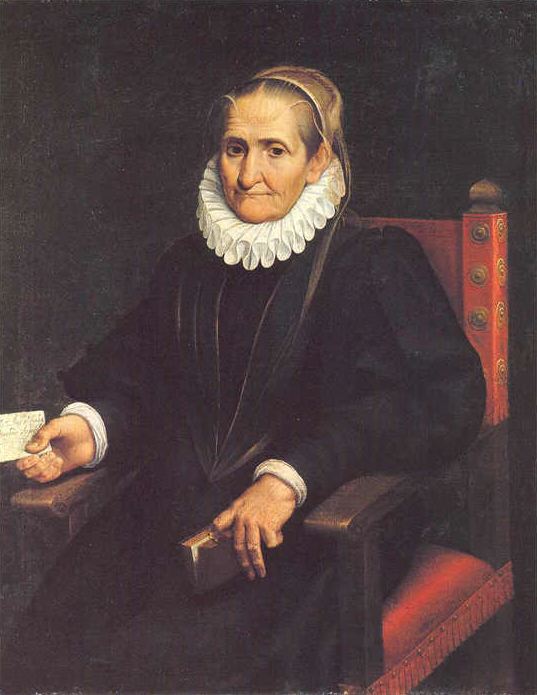I was born in Lombardy around 1532. I say around because being one of seven children, not even I was quite sure of my own birth date. Both of my parents were of noble background, so I was fortunate enough to be receive a well-rounded education that included the fine arts.
Above all, my father stressed painting, and I was sent to study with Bernardino Campi and Bernardino Gatti. It was an honor to be able to learn under such respected painters. My greatest work while studying under Bernardino Campi was the double portrait Bernardino Campi Painting Sofonisba Anguissola. It was quite an accomplishment for an eighteen year old, if I may say so myself.
 | ||
| Bernardino Campi Painting Sofonisba Anguissola |
 |
| The completed Child Bitten by a Crab |
After the Queen's unfortunate death, Philip had the generosity to invest in my future by marrying me to Don Francisco de Moncada, son of the viceroy of Sicily. Together, we left Spain to settle in Palermo, where my husband died in 1579.
While traveling home to Cremona, I met another man by the name of Orazio Lomellino. He was the captain of my ship, and a considerably younger but handsome man. Being a rather unorthodox woman, I proposed to him at the end of our voyage and we were married shortly after.
My years with Orazio may very well have been my greatest. 45 long and happy years I spent with my second husband. Towards the end of my life, I had cataracts and could no longer paint. However, I was still very involved in the arts and continued to patron many artists.
 |
| Self-Portrait |
Unfortunately, I died in 1625, leaving my younger husband behind. On what would have been my 100th birthday, he had a quote engraved on my tombstone: "To Sofonisba, my wife ... who is recorded among the illustrious women of the world, outstanding in portraying the images of man ... Orazio Lomellino, in sorrow for the loss of his great love, in 1632, dedicated this little tribute to such a great woman." He always was a kind and humble man.
I regret no part of my life, and I do believe I lived it to the fullest. I am proud of both myself and of the works I made. I do not intend to sound too prideful, but without me, the period of Renaissance art would not have been the same.
Sources: wikipedia.org, artcyclopedia.com, mystudios.com, womenshistory.about.com
No comments:
Post a Comment